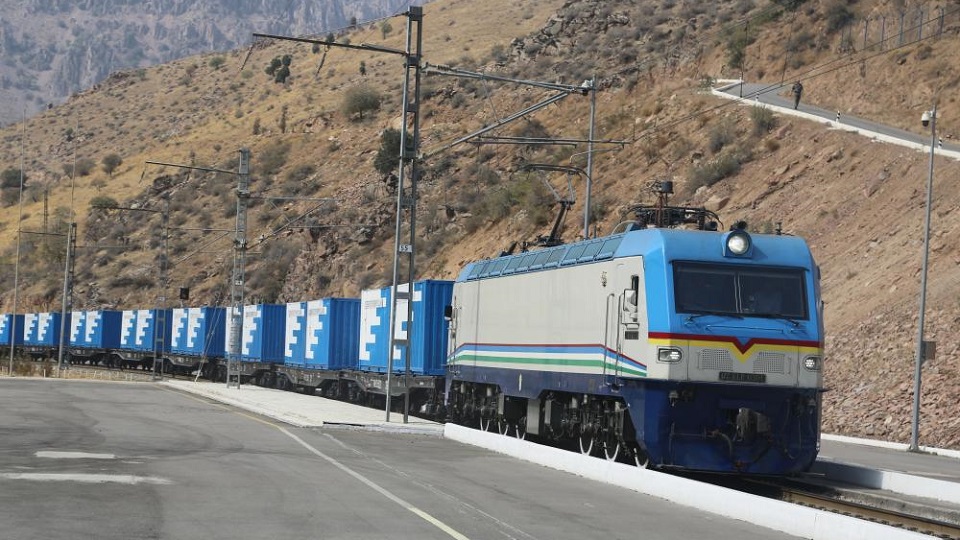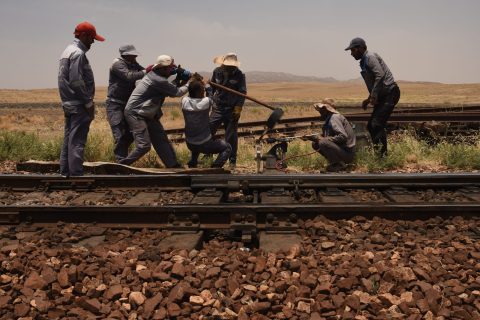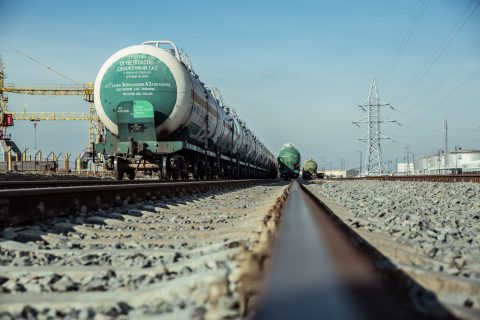China’s focus on Central Asia brings new rail freight opportunities

China is increasingly focused on transport connections with Central Asia. Huge investments are in the pipeline, and cooperation agreements are being signed to emphasise the importance of the region to China. The New Silk Road may have suffered a setback with a decrease in volumes through Russia, China sees new rail freight opportunities in the neighbouring region.
Chinese Foreign Minister Wang Yi met this month with leaders from five Central Asian states to outline key cooperation points that are expected to signal new investment and greater East-West rail freight connectivity. The China + Central Asia (C+C5) Foreign Ministers’ Meeting included representatives from Kazakhstan, Kyrgyzstan, Tajikistan, Turkmenistan, and Uzbekistan.
Cooperation of connectivity
Speaking at the third C+C5 meeting in Nur-Sultan, Kazakhstan, Wang called for the countries to “deepen the cooperation of connectivity” and “improve green lanes for cargo.” Although the route through Russia is not closed off, the volumes via Russia have decreased significantly since the outbreak of the war in Ukraine. Trains between Europe and China are finding several alternatives, so far most likely via the Caspian Sea.
But there are many more possibilities in the Central Asian region, which China is willing to explore. A good example is the China-Kyrgyzstan-Uzbekistan (CKU) railway project, a 523 kilometres line that will stretch from Kashgar in China to Tashkent in Uzbekistan. With an estimated price tag in excess of 4.5 billion US dollars, the project has languished for many years with no visible progress, but recent geopolitical shifts may now accelerate plans.
Akylbek Japarov, Prime Minister of Kyrgyzstan, now states: “We expect that during the summit of the Shanghai Cooperation Organisation in September, the leaders of the three countries will sign a document to begin construction of the railway”.
Through Turkmenistan
More immediately, the role of Turkmenistan is on the rise. Although the CKU railway line will need several years to be completed, a train has just left this month from the Kazakh city of Pavlodar through Turkmenistan and Iran, headed for Turkey. This is just one example of a transit route with potential, as it avoids transit through Russia and provides an alternative to the already congested Middle Corridor.
Although Afghanistan is officially not part of the C+C5, it is also considered as a country with the potential to increase regional cooperation. The Khaf-Herat railway line between Iran and Afghanistan could possibly extend towards China as part of the East-West railway corridor. The plan is to extend the connection from Herat to the Afghanistan-Tajikistan border and, after crossing Tajikistan, proceed through Kyrgyzstan, from where it will connect to China. Also this project received renewed interest and could just be another transit route connecting east and west.
Financial streamlining
At the C+C5 member meeting last week, China and the five Central Asian republics agreed to broaden agreements for payments in national currencies against the dollar and create suitable financial mechanisms to expand cooperation. In this way, the dollar is weakened, and the local currency strengthened. This is expected to add impetus to regional rail freight development. “We will continue high-quality cooperation within the Belt and Road Initiative, expand multifaceted cooperation, consider setting up a suitable financial mechanism and further broaden agreements on national currencies,” Wang said at the meeting.
In general, the foreign minister assured that China will ensure the safe and stable operation of the trade route to Europe by land via Central Asia. “We will promote the simplification of customs procedures, optimise green corridors for cargo transport, speed up the resumption of flights, ensure the integrity of production chains and the continuity of supply chains in the region,” he was quoted as saying. With that sentence, he made sure to explain that China has all but given up on the New Silk Road.
You just read one of our premium articles free of charge
Want full access? Take advantage of our exclusive offer




